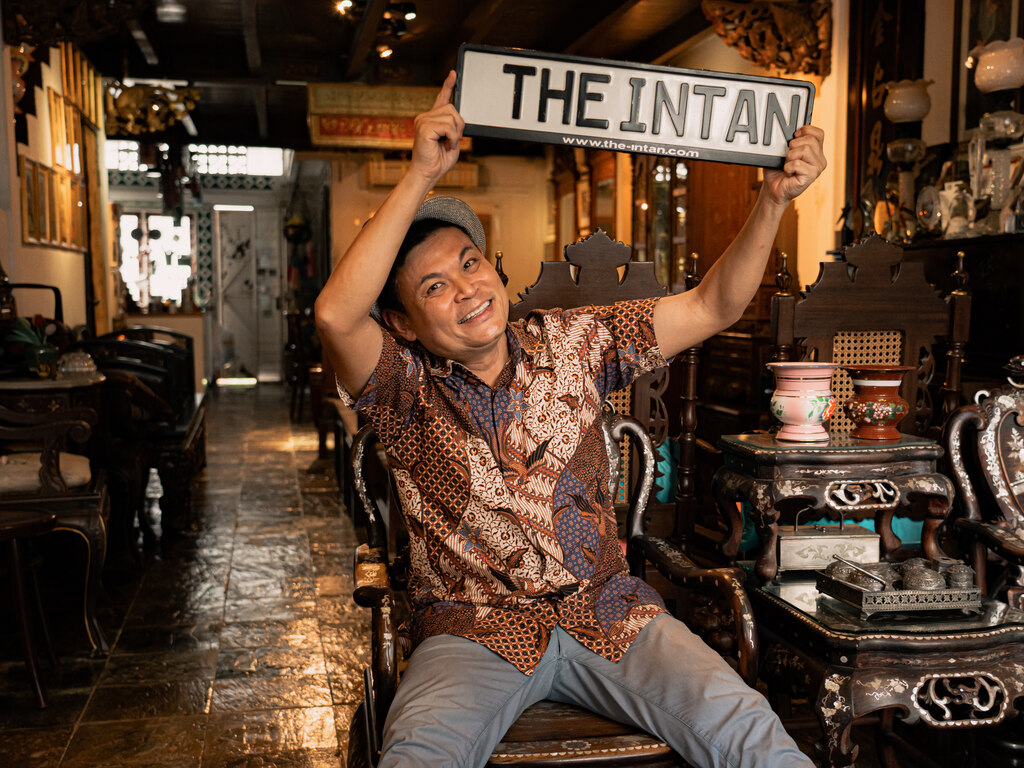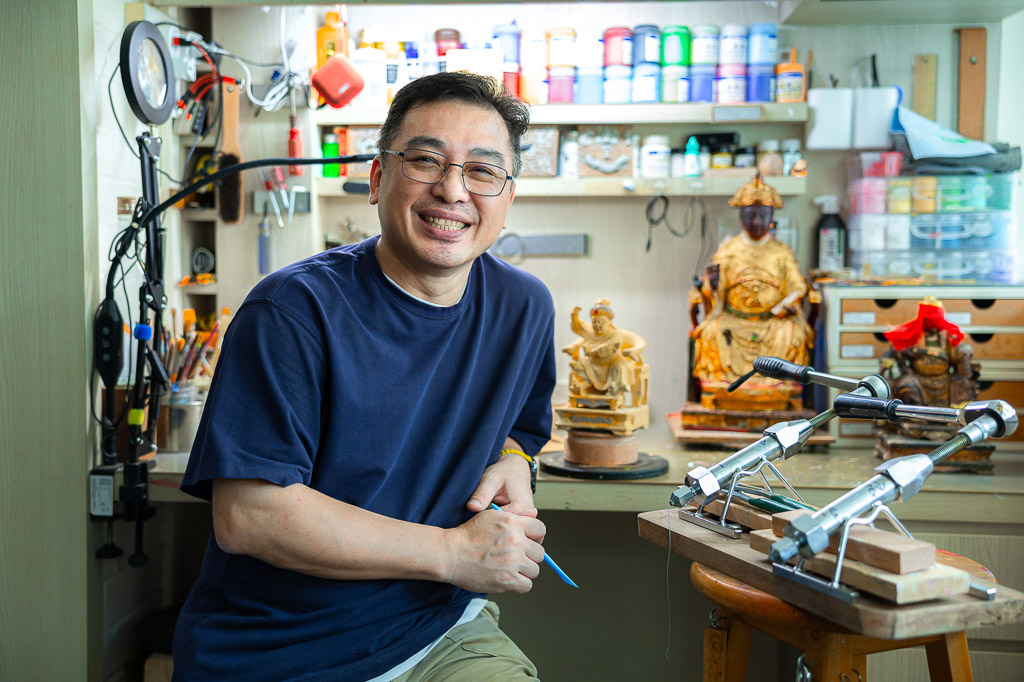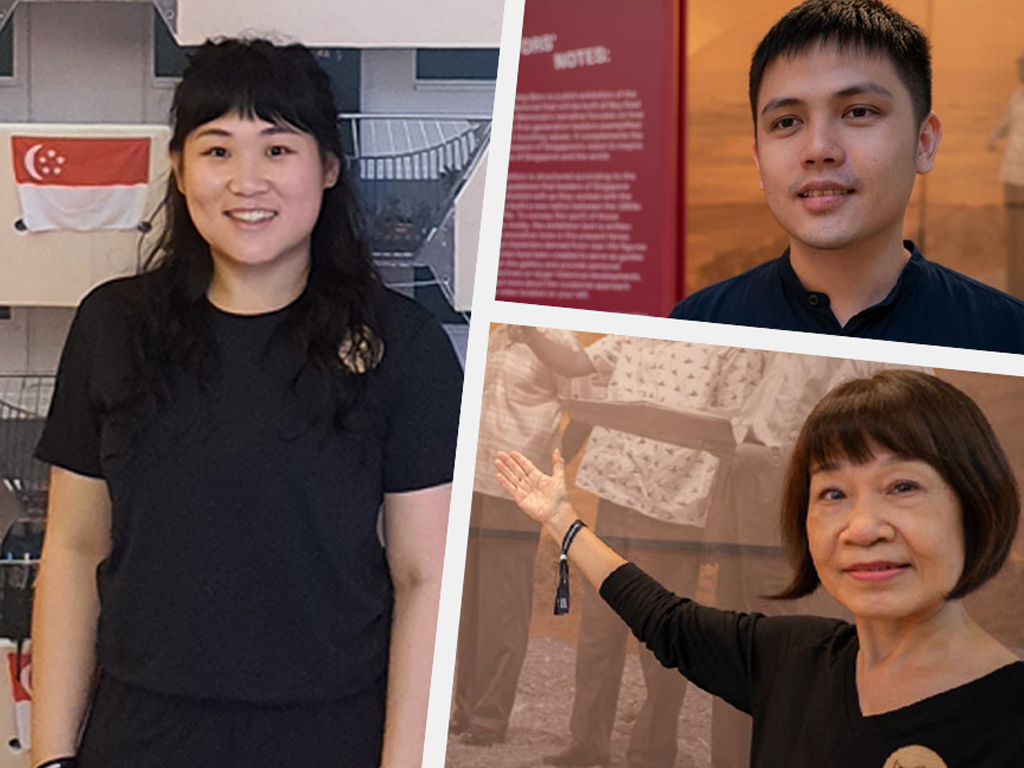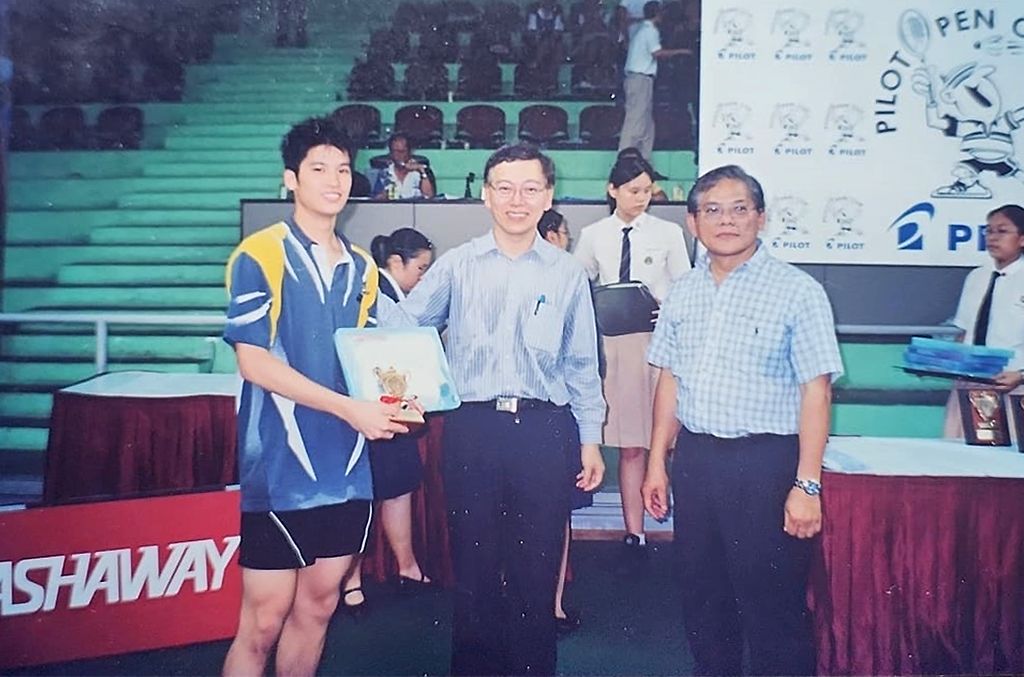Vermicelli: A Common Thread Among Cultures
A worthy cousin of rice, vermicelli has a long-standing reputation as one of the most versatile ingredients that can be spun into a myriad of dishes by the different communities in Singapore.
- 15 Aug 2022
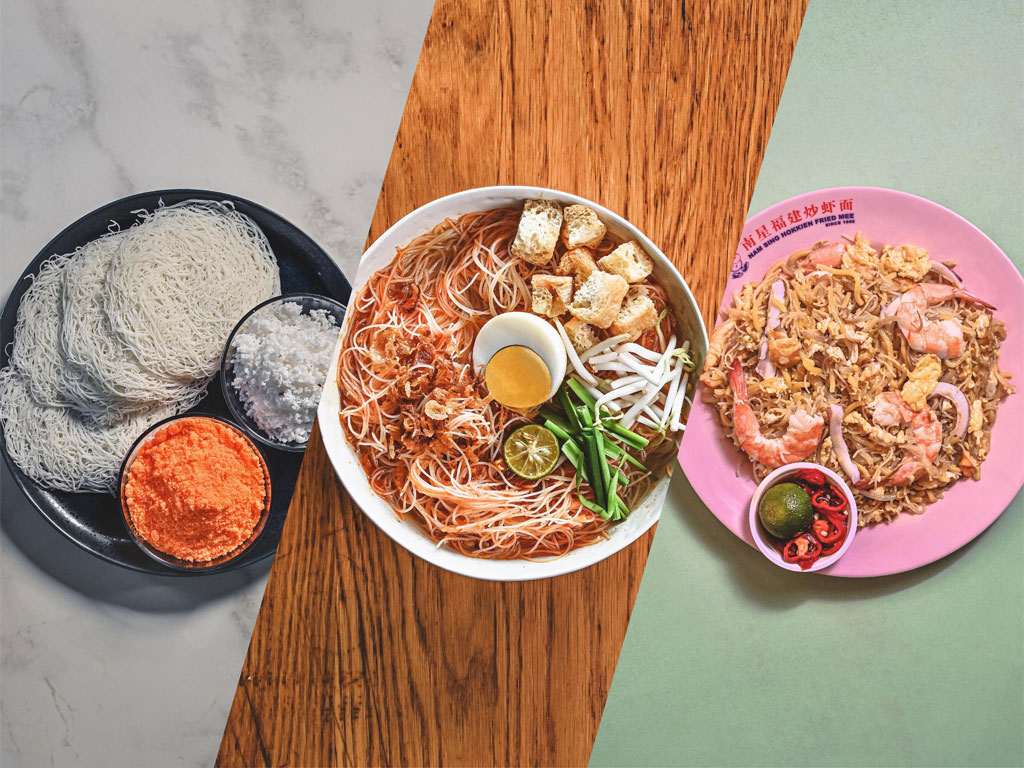
From savoury to sweet, vermicelli has served well as a base ingredient for many beloved local dishes, including putu mayam (also known as iddiyappam), mee siam and Hokkien mee.
The noodle may seem unassuming at first — bouncy thin strands, chalky white appearance — but ask Singaporeans, and they could immediately tell you that it’s bee hoon, bihun, or saemia (depending on who you ask).
Vermicelli is arguably an understated yet ubiquitous staple of great significance in our local cuisines. Like rice, it can be paired and combined in any number of ways.
Let’s tuck into the history behind three vermicelli dishes from three cultures: mee siam, Hokkien mee and putu mayam, and how they made their way into our local food scene — and our hearts.
Vermicelli is arguably an understated yet ubiquitous staple of great significance in our local cuisines. Like rice, it can be paired and combined in any number of ways.
Let’s tuck into the history behind three vermicelli dishes from three cultures: mee siam, Hokkien mee and putu mayam, and how they made their way into our local food scene — and our hearts.
Crossing borders and cultures
The origin behind mee siam has been contested by notable figures and food critics alike. Renowned food columnist Sylvia Tan suggests that the dish has Malay roots; the late Mdm Chua Jim Neo, a well-known nyonya and mother of former Prime Minister Lee Kuan Yew, believed that it came from Thailand, or Siam as it was called back then (hence the name). A widely held consensus posits that the dish is cross-cultural, the culmination of blending flavours from Chinese, Malay, Peranakan and Thai cuisines.
Rempah, which is a paste of spices, is an important aspect that could make or break the dish, as it's used to marinate the noodles and as a broth base.
Masterchef finalist Shamsydar Ani opines that the flavours in the dish are not quintessentially Malay, noting its lightness in taste — one of the hallmarks of Thai flavours. In comparison to the nuttier, creamier profile of most Malay dishes, mee siam may come off as somewhat of an outlier, but should not be discounted as the lesser sibling of Malay foods.
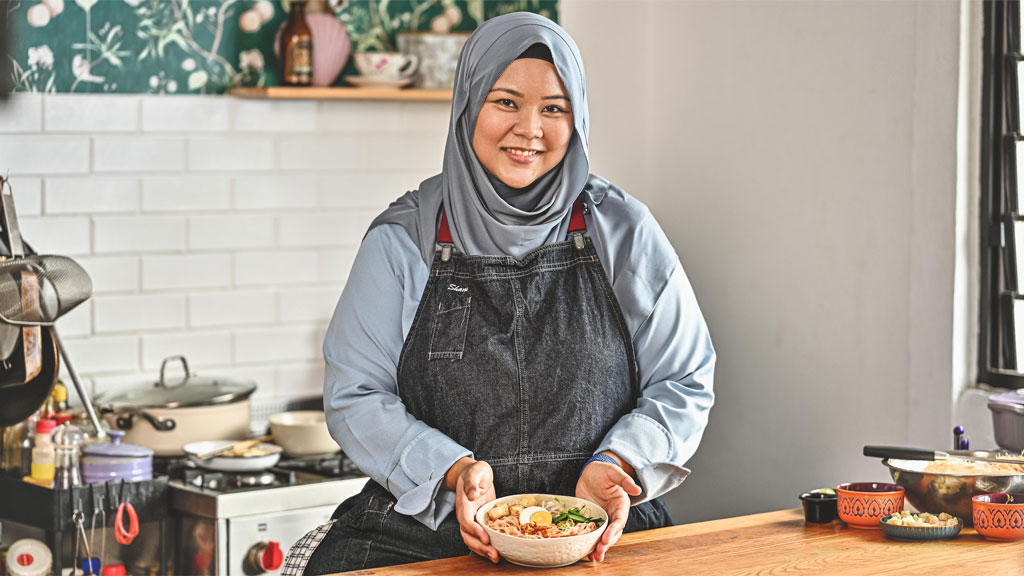
"Mee siam is like the middle child. People don't really talk about it. But it's what primary school kids eat at the school because it's affordable," recalls Chef Shamsydar on how she grew up eating it.
She also reminisces the mee siam she had at her school, how its taste made such a lasting impression that it became the benchmark for her dish, emulating the same flavour profile by memory.
Although variants of it exist — including a dry version, she believes mee siam to be unique to Singapore, and that it should be viewed as a national treasure not to be forgotten.
The latter story seems to coincide with Nam Sing Hokkien Mee owner Chef Ng Hock Wah’s account of how his father and uncle began their food stall there in the 1940s, preparing the dish as supper for the coolies. According to Chef Ng, the dish didn’t have an official name then, with customers often referring to it as ‘Tu Ka Mee’ or ‘Kay Luo Mee’ (“noodle on ground” or “low stone noodle” respectively in Hokkien). At one point, it became ‘Rochor Mee’ due to its location.
Although variants of it exist — including a dry version, she believes mee siam to be unique to Singapore, and that it should be viewed as a national treasure not to be forgotten.
From supper to soul food
It’s difficult to pinpoint when Hokkien mee first appeared in our food scene. In one anecdote, a Hokkien ex-sailor created this dish and started a stall at Rochor Road in the 1930s. Others believe that it was the stall beside the 7th Storey Hotel near Rochor Road that first cooked up the dish.The latter story seems to coincide with Nam Sing Hokkien Mee owner Chef Ng Hock Wah’s account of how his father and uncle began their food stall there in the 1940s, preparing the dish as supper for the coolies. According to Chef Ng, the dish didn’t have an official name then, with customers often referring to it as ‘Tu Ka Mee’ or ‘Kay Luo Mee’ (“noodle on ground” or “low stone noodle” respectively in Hokkien). At one point, it became ‘Rochor Mee’ due to its location.
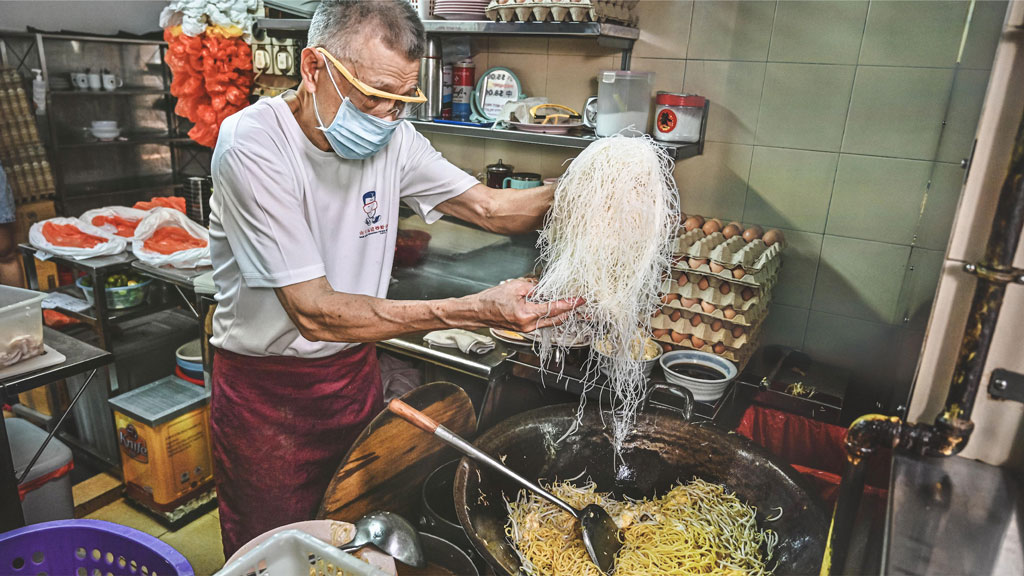
Chef Ng usually combines vermicelli and yellow noodles in 2:1 ratio to neutralise the alkaline taste of the latter.
The dish evolved, with customers requesting ingredients like pork, squid, prawn and chilli to spice it up, and eventually renamed to Hokkien mee — a nod to the ethnic Chinese community behind its invention.
Chef Ng learnt the ropes on how to prepare the dish from his father, from buying the ingredients to cooking up a mean plate of Hokkien mee. He soon “graduated” and started his own stall along Florence Road in his late teens — with his father’s blessing. Today, he’s been in the business for nearly 60 years.
Chef Ng learnt the ropes on how to prepare the dish from his father, from buying the ingredients to cooking up a mean plate of Hokkien mee. He soon “graduated” and started his own stall along Florence Road in his late teens — with his father’s blessing. Today, he’s been in the business for nearly 60 years.
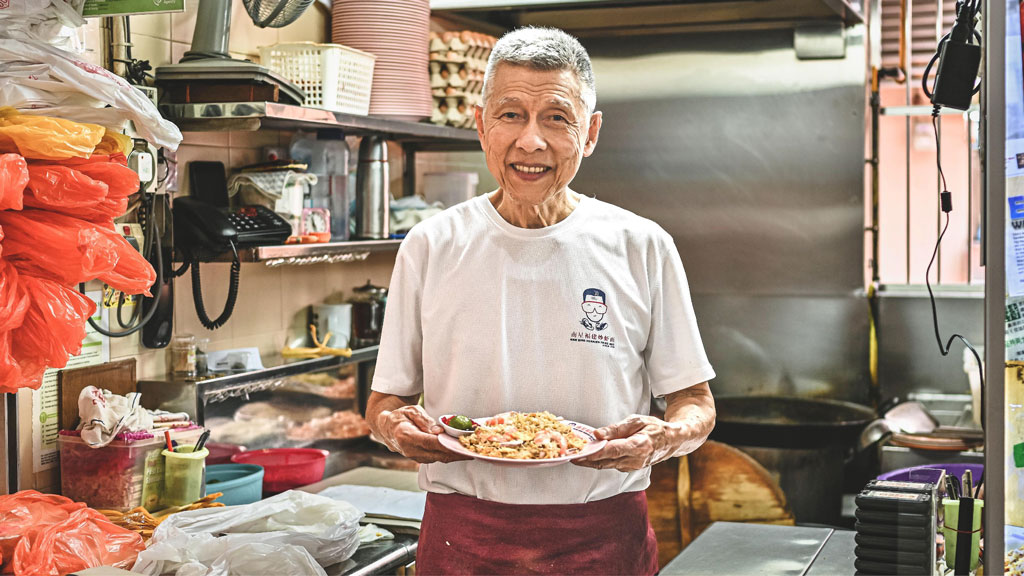
"It's important to pass down this traditional dish and view it as part of our unique local food heritage," says Chef Ng, who will soon be passing the mantle to his son to become the third-generation Hokkien mee seller in his family. For now, he sees this as earning an honest living for himself.
Finding comfort in a sweet treat
A typical plate of putu mayam includes vermicelli bundled up into flat discs, paired with coconut shavings and a few spoonfuls of sugar. But don’t dismiss its simplicity just yet. This sweet snack has often been billed as comfort food by both Indians and non-Indians.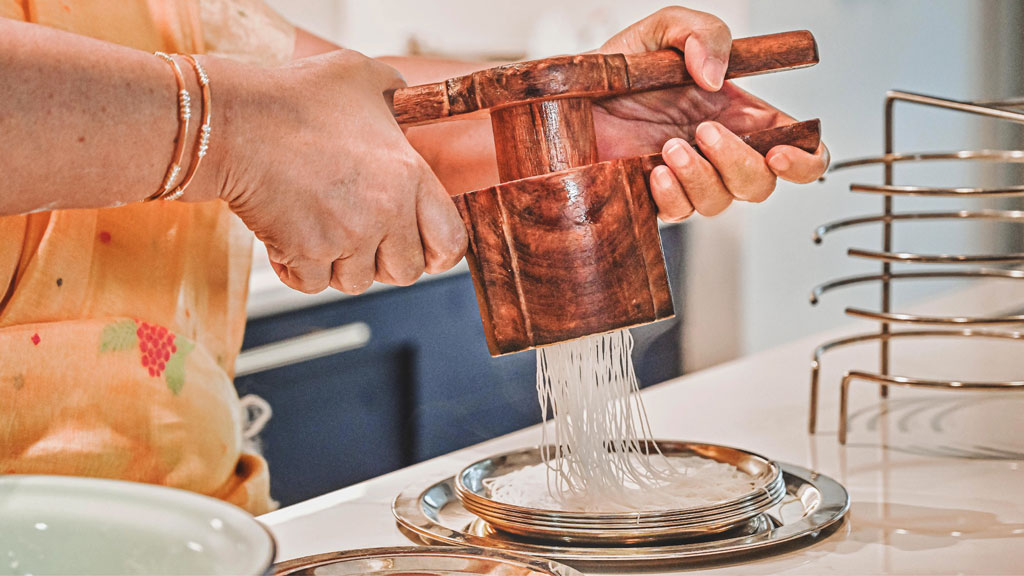
The dough is piped through a wooden mould called sevanazhi, which has holes to create long, thin strands of vermicelli.
That’s no exception for provision shop owner Mrs Vijaya Ezhilan, whose sister-in-law taught her how to make it from scratch soon after she got married. Though her first attempts weren’t successful, she soon learnt that the ratio of water to rice flour to make the dough must be precise. Any misstep would result in a watery consistency, which makes it difficult to press through the wooden mould. But that didn’t stop Mrs Ezhilan, who wished to recreate the same taste of how she remembered eating it as a child in India.
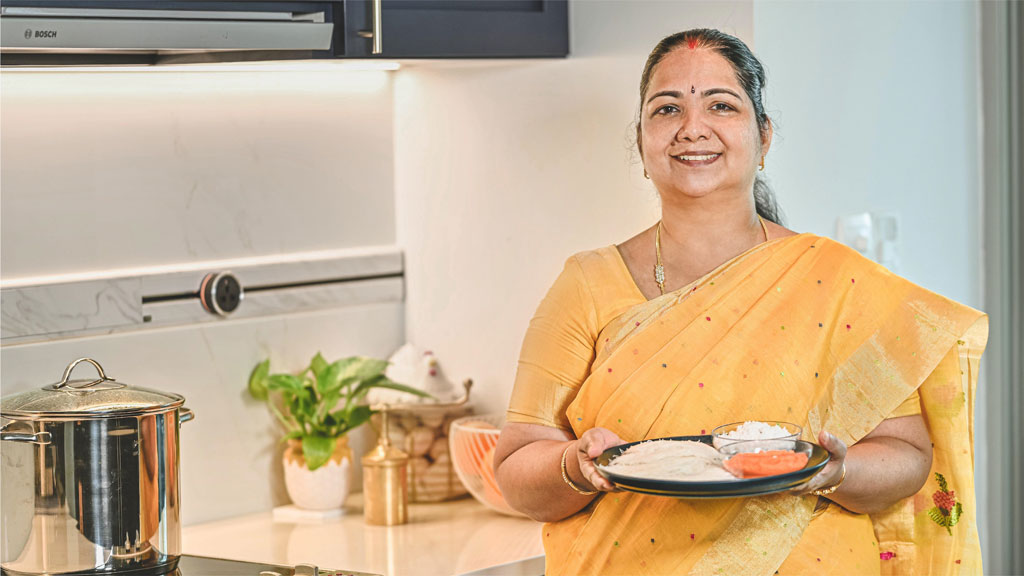
"People here love to have it because of its simplicity," quips Mrs Vijiaya.
Although widely known as putu mayam in Singapore, its origins can be traced all the way back to Tamil Nadu, where it’s called iddiyappam and served similarly. A savoury version is not uncommon either, with either curry or stew as accompaniments.
This sweet delicacy made its way to our shores through itinerant Indian vendors, who took to the streets with a basket full of putu mayam balanced on their heads and sold them to hungry civilians. These days, it’s a common staple during Deepavali, and has even popped up at Hari Raya Puasa and other Malay festivities, thanks to the Indian Muslim community who helped make it popular.
This sweet delicacy made its way to our shores through itinerant Indian vendors, who took to the streets with a basket full of putu mayam balanced on their heads and sold them to hungry civilians. These days, it’s a common staple during Deepavali, and has even popped up at Hari Raya Puasa and other Malay festivities, thanks to the Indian Muslim community who helped make it popular.

